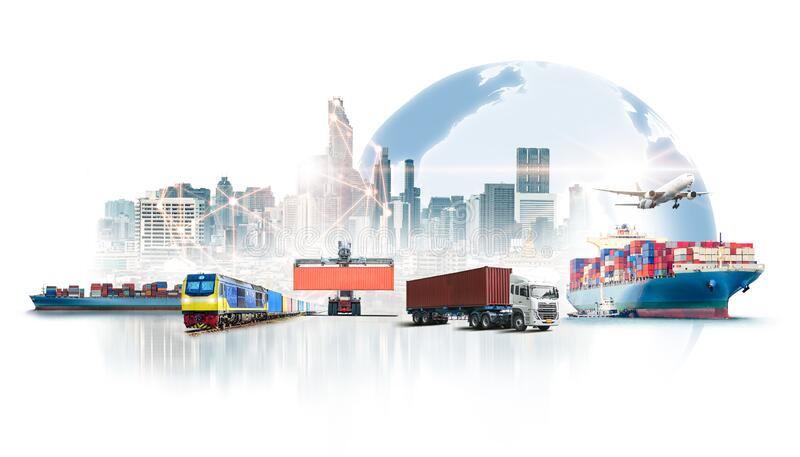You will be able to plan long, medium, or short distance routes and the preparation of delivery routes by choosing the best possible combination of means of transport after studying the Transport and Logistics Training Cycle. You will also be able to carry out import and export operations of goods with the highest level of accuracy.
Additionally, it informs you of the logistical options the market provides in compliance with the laws now in effect as well as the goals set by the management of the organization within the parameters of quality, safety, and environmental respect.
Types of Transportation in Logistics:
1. Maritime transport
People or goods are moved from one geographic location to another by maritime transit. It is carried out at sea, i.e., aboard a boat, ship, etc.
People are now more frequently traveling by sea via short voyages or cruises as a result of the rise in commercial aviation. Large ships are mostly utilized to deliver products through international waterways in this respect.
For its dependability and adaptability, maritime transportation is unparalleled. In order to accomplish this, the industry has a vast number of ships with various features that are tailored to the requirements and the type of cargo being transported (oil tankers, bulk carriers, container ships, roll-on-off, etc.).
Main characteristics of maritime transport
- Substantial storage capacity for bulk or container loads (a container ship can carry up to 165,000 deadweight tons)
- The best method for transporting heavy material between two geographically remote locations is by sea.
- Due to the improvements in highways, combining maritime travel with other forms of land transportation is very prevalent.
- Since there are ships of all sizes that can accommodate various types of cargo, they represent a flexible and adaptable form of transportation.
2. Ground transportation
One of the most common methods for moving items in the logistics industry is via land transport. It is the most popular for short travels inside the same region or nation, yet it can also be utilized as a form of international transportation.
This method of transportation is made feasible by the enormous road network that has grown through time and allows commodities to quickly go to the opposite end of a country.
Main features
- It is always done by road.
- You can transport goods or people.
- Promote door-to-door delivery service.
- Allows the transport of patients in emergencies.
- Allows you to transport dangerous materials or products
- The costs are cheaper than air transport.
Furthermore, it enables you to deliver any kind of product because there are numerous ways to carry the goods. For instance, perishable items can be sent using vehicles that are designed to keep them fresh for a specific amount of time. However, compared to cheaper train transportation, this option may be more expensive.
3. Air transportation
As a result of the technological advancements made throughout the 20th century, it is the most recent kind of transportation. The fundamental distinction between this mode of transportation and others is the lack of physical impediments; all that is required for takeoff and landing are flat surfaces of land. The ability to move things quickly is its most crucial characteristic, and because of this ability to move things quickly, the usage of cargo planes for moving goods has grown in recent years.
Aeronautical technology is also making enormous progress in logistics-related tasks since it equips airplanes with engines that are more fuel-efficient.
Advantages of air freight transport
- There are no physical obstructions, making it able to go uninterrupted.
- It is the fastest form of transportation there is, which is crucial in terms of logistics.
- Simple access: The many forms of air transportation may move cargo that other land- or sea-based transportation methods cannot.
- Due to the speed of transportation, it is ideal for transporting expensive or perishable commodities over great distances.
4. Rail transport
The various rail modes are flourishing as a result of public concern over pollution and climate change. It is perhaps the least polluting medium overall from an ecological standpoint.
It is possible that the transportation is best planned in terms of the routes and set schedules. Compared to other forms of transportation, like ships or airplanes, for instance, its service is consistent and reliable.
Advantages of rail transport
- Large volumes can be transported due to the size of the vehicles utilized to convey the goods.
- In comparison to other modes, rail transportation is inexpensive.
- Furthermore, we must take into account the fact that its high capacity enables the transport of huge volumes, thereby minimizing the number of trips.
- Different types of items can be transported via rail freight. As a result, it is quite flexible.
- Compared to other forms of transportation, it has a lower rate of accidents and pollutants.
- Traffic and traffic congestion issues are avoided by using rail transportation.



